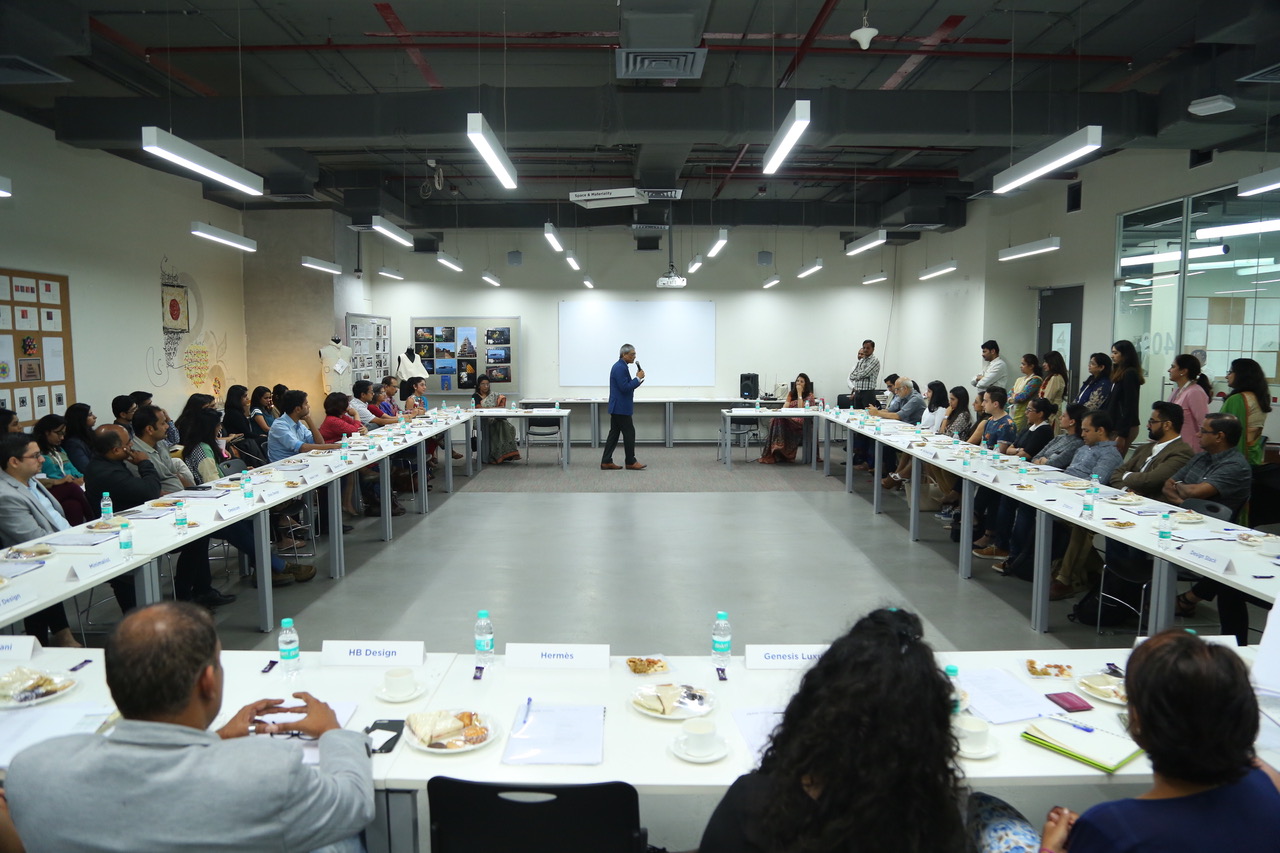The Lower Parel Innovation District is an ecosystem that incubates design thinkers with its three schools- ISDI Parsons School of Design, ISDI WPP School of Communication and the Indian School of Management and Entrepreneurship [ISME] and the accelerator for creative entrepreneurs- ISDI ACE. ISDI, launched in the year 2013, in collaboration with the prestigious Parsons the New School for Design, New York, is already one of the leading institutions for design and innovation education in the country. Its first cohort will graduate next year, in 2017. Ms. Radha Kapoor, a creative entrepreneur herself, sowed the seeds of this ecosystem with the aim of bringing design and industry together and ISDI’s Round Table Conference this month on “How Design Education Must Evolve”, was a reinforcement of this vision.
Today, the bandwidth of opportunities available to a designer have expanded with the simultaneous expansion of scope and applicability. The new age model of design education must reflect this shift and accommodate for the requisite interdisciplinary skills as well as soft skills. Design schooling can partly brace a student with conceptual knowledge. The rest of the education must be experiential. Thus, ISDI ensures a consistent student –industry interface after each year of the undergraduate program through the phased programs of- Observership, Apprenticeship and finally, an Internship. The intent of ISDI’s RTC this year was to enlist the support of the companies in nurturing the young minds while also to address the challenges that internship providers face, the pre-requisites, the opportunities that the industry sees and how design education can evolve to forge the future.
The following proceedings capture the essence of the exciting conference:
The roles & opportunities available in the industry
The academia strives to deliver future-proof design education, the industry delivers the rest of the education by providing students with an experiential platform and it is incumbent upon the students then to absorb the knowledge. Students come with pre-conceived notions about the type of work that their area of specialisation entails and the work that they will be involved in, as an intern. Their role is to stay curious, leverage the opportunity and be flexible with their work timings. Flexibility in thinking will allow them to explore the newer, evolving roles of a design manager and a design researcher.
The scope for adding more value and substance to the curriculum
Design offers solutions within every industry. It can improve the social fabric by addressing the disability in usability. Introducing this within the curriculum can add value to design education and to the society, at large. Yet, the perceptivity required to address problems can come with reading, which will not only serve to improve their general knowledge, it will also lead them to the path of researching and adding meaning to their work.
Creative entrepreneurs and those in the design space have to account for the numbers as well. Hence, there is scope for right brainers to be familiarized with the left brain concepts like finance and accounting. Importantly, a culture of discipline and of respecting deadlines needs to be inculcated. This needs to be balanced with the idea of ‘Fun in learning and learning in fun’ to stimulate creativity.
The skills & knowledge required
The 3 C’s [Curiosity, Communication and Compassion], stated by the Harvard Business Review as skills of the 21st century supplement the 3P’s- Passion, Proficiency and Portfolio to cultivate a good designer. Within this framework, there has been an emphasis on the need for soft skills, proactivity in addressing challenges, self-discipline, seriousness, sensitivity to time, a sense of ownership, emotional intelligence, application of integrative thinking, empathy and humility. “It is imperative for students to look beyond the immediate problem for it is only on viewing the white space that the black dot comes to the fore.”-Mr. Nishant Bhaskar, Godrej Innovation Lab.
The challenges & gaps faced
Offering internships is an investment for the employer and they are unable to transmit their wealth of knowledge and experience because of the student’s unreceptivity to absorb it all. Curiosity is often the missing link and it can only be attempted to a certain level through pedagogy. Experience and self-drive can address the latter half. While certain students are driven, there is a literal gap in conversion from the ideation stage to the execution stage on the student’s end. The real world demands an understanding of costing as much as creating. Thus, reaching the optimal level of interdisciplinary education is crucial.






























